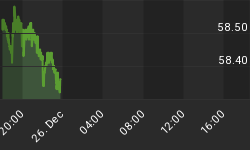Economic growth was supposed to bring greater prosperity to working and middle-class Americans, but as wages fail to keep pace with economic growth, many are struggling with jobs that simply don’t pay enough.
Instead, economic growth is benefitting the wealthy, if Labor Department statistics are anything to go by.
According to the department’s latest report, the cost of living rose 2.9 percent over last 12 months ending July, and the inflation rate outstripped a 2.7-percent increase in wages over the same period.
The index for all items less food and energy rose 2.4 percent for the 12 months, which was the largest 12-month increase since the period ending September 2008. The food index increased 1.4 percent over the last 12 months, and the energy index rose 12.1 percent.
This decline puts real wages at their worst level since October 2012.
“It was the real-wage story that caught our attention,” said Ian Lyngen, Head of U.S. rates strategy at BMO Capitals Markets. The level “speaks to the ‘ugly side of relation’ as it undermines consumers’ real purchasing power.”
These figures don't match with those of a Labor Department earlier this month showing the employment cost index rising at a 2.8 percent year-over-year rate in the second quarter, becoming the fastest gain since the third quarter 2008. But this indicator didn’t include an inflation adjustment. Average hourly earnings rose 2.7 percent in July, a little bit lower than the second quarter pace, while average weekly earnings increased 3 percent (not adjusted for inflation).
Stagnant wages aren’t the only thing American workers are battling—they’re also facing the disappearance of job benefits.
The average U.S. "real wage," a federal measure of pay that takes inflation into account, fell to $10.76 an hour last month, 2 cents down from where it was a year ago. The leaves the American worker now earning around $44,500 a year--not much more than what the typical worker earned in 40 years ago, adjusted for inflation.
Despite accelerating U.S. economic growth, which grew at 4.1 percent rate in the second quarter, the best gain in nearly four years, and an unemployment rate that’s sunk to its lowest in decades, employees haven’t gotten that expected raise. Instead, small recent increases were recorded, but they also remained in the shadow of rising prices. Related: Sealing Off The North Korea Smuggling Loophole
Although the official rate of unemployment in the U.S. has fallen to exceptionally low 3.9 percent and the Federal Reserve forecasts that the unemployment rate will reach 3.5 percent by the end of the year, almost 80 percent of Americans say they live from paycheck to paycheck, many not knowing how big their next one will be.
Their frustrations are only growing.
According to a Pew Research report, "despite some ups and downs over the past several decades, today's real average wage has about the same purchasing power it did 40 years ago."

(Click to enlarge)
Source: Pew Research Center
“We are nearly a decade into the recovery and we’re still arguing about whether or not we’re seeing meaningful gains in wages. That should be a given at this point in the cycle,” said Lindsey Piegza, the chief economist at Stifel, an investment firm.
Consumers are paying more for housing, health care and car insurance. And let's not forget about the price of gas gallon, which has increased 50 cents in the past year, up to a national average of $2.85, according to AAA.
By Damir Kaletovic for Safehaven.com
More Top Reads From Safehaven.com
















